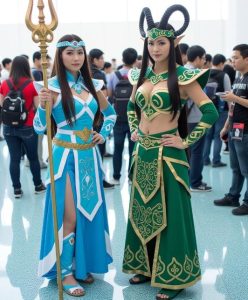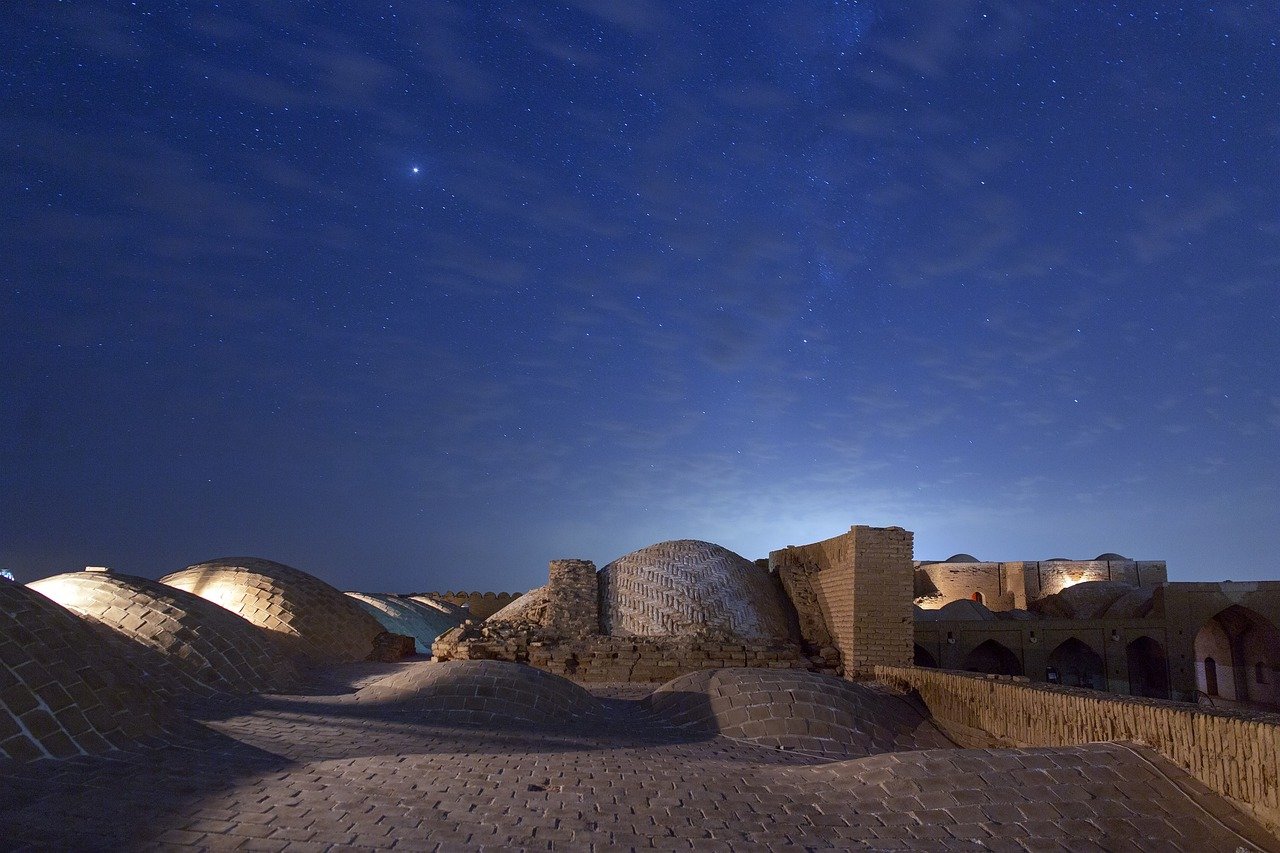 Costumes have long been a way for people to tell stories about who they are and what they believe in. From ancient ceremonial garb to modern superhero suits, clothing has always carried meaning beyond style. Cosplay, a blend of costume and play, takes this expression to new heights. It turns everyday people into living art, blurring the lines between fantasy, identity, and social commentary. Behind the glitter and glue guns, cosplay reflects deeper truths about history, politics, and cultural identity.
Costumes have long been a way for people to tell stories about who they are and what they believe in. From ancient ceremonial garb to modern superhero suits, clothing has always carried meaning beyond style. Cosplay, a blend of costume and play, takes this expression to new heights. It turns everyday people into living art, blurring the lines between fantasy, identity, and social commentary. Behind the glitter and glue guns, cosplay reflects deeper truths about history, politics, and cultural identity.
Today, cosplay communities serve as powerful platforms for expression, particularly among gamer girls and fans who use costume creation as a way to tell their own stories. Whether recreating characters from games, anime, or folklore, cosplayers often mix personal experiences with cultural elements. Some do it to honor a character that inspired them; others reinterpret roles to challenge stereotypes. These creative choices highlight how cosplay becomes a modern mythmaking tool, one that connects people through shared imagination while reflecting their unique perspectives.
Cosplay as Cultural Storytelling
Every costume carries a story, often tied to personal or collective identity. A historical uniform might represent resistance. A fantasy armor may symbolize empowerment. When cosplayers recreate these looks, they’re not just mimicking fiction, they’re participating in a form of cultural storytelling. Through these transformations, people reclaim narratives once controlled by mainstream media. For example, dressing as a female knight or a reimagined goddess can shift how gender roles are perceived in both fantasy and reality.
Some cosplayers even weave religious or symbolic motifs into their work. Designs inspired by Hindu deities, Norse gods, or angelic imagery appear frequently at conventions. This practice connects ancient beliefs with contemporary creativity and shows the broader impact of religion on society and culture. This practice connects ancient beliefs with contemporary creativity. While some see it as respectful homage, others raise concerns about cultural appropriation. The debate often centers on intent and understanding. Is the costume celebrating a culture or exploiting it? Responsible cosplayers research deeply before creating such pieces, ensuring their portrayal remains meaningful rather than offensive.
The Politics of Representation
Representation has become one of the most talked-about issues in cosplay. Fans often challenge how race, gender, and body image are depicted in pop culture. By embodying diverse characters, they bring attention to inclusion in media spaces that once excluded them. Cosplay contests and panels now celebrate diversity, giving a platform to people from all backgrounds. When fans of color portray traditionally white characters, or men take on roles of iconic heroines, they send a powerful message: anyone can be a hero.
This is where cosplay intersects with politics and social change. Costumes become statements, and conventions turn into forums for dialogue. A person dressed as a warrior princess might also be fighting for gender equality. Someone in a superhero suit might advocate for mental health awareness. Each costume becomes a political act, whether consciously or not. As one fan once said, “When I wear armor, I feel like I’m rewriting who gets to be strong.”
Mythmaking in the Modern Age
Cosplay is modern mythmaking, an art form that turns pop culture into a shared mythology. Like ancient bards and storytellers, today’s cosplayers reimagine old legends through fresh eyes. They combine craftsmanship, technology, and storytelling to craft something deeply human. At conventions, entire communities gather to celebrate these living myths. It’s less about escape and more about connection. People see their favorite heroes brought to life, and through that, they find belonging.
Even digital culture fuels this new kind of mythology. Online spaces allow fans to share tutorials, stories, and photography, building a global creative network. Platforms spotlight talented artists and gamer girls who redefine what fandom looks like. Through likes, shares, and collaborations, cosplay keeps evolving into a modern folk art, one shaped by collaboration rather than hierarchy.
Respect, Creativity, and Responsibility
With creativity comes responsibility. As cosplay expands across cultures, respecting origins and symbols becomes essential. A costume rooted in religious or historical meaning should be approached thoughtfully. Awareness of the source material prevents misrepresentation and encourages learning. Many artists now include cultural notes when presenting their work, acknowledging the traditions that inspired their designs. This builds bridges between fandom and heritage rather than creating tension.
At its core, cosplay celebrates imagination, but it also mirrors the world we live in. It reflects hopes, struggles, and the desire to be seen. Whether someone sews a historical gown, crafts futuristic armor, or steps into the shoes of a mythical hero, the act remains deeply personal. It’s about telling stories that matter, with fabric, foam, and heart.
Conclusion
Cosplay is more than dressing up, it’s a dialogue between the past and present, between imagination and identity. It transforms entertainment into art and fans into storytellers. Through the efforts of passionate creators, from skilled prop-makers to expressive gamer girls, the culture continues to evolve. Whether confronting politics, preserving heritage, or sparking inspiration, cosplay remains a powerful way to shape modern myths one costume at a time.

